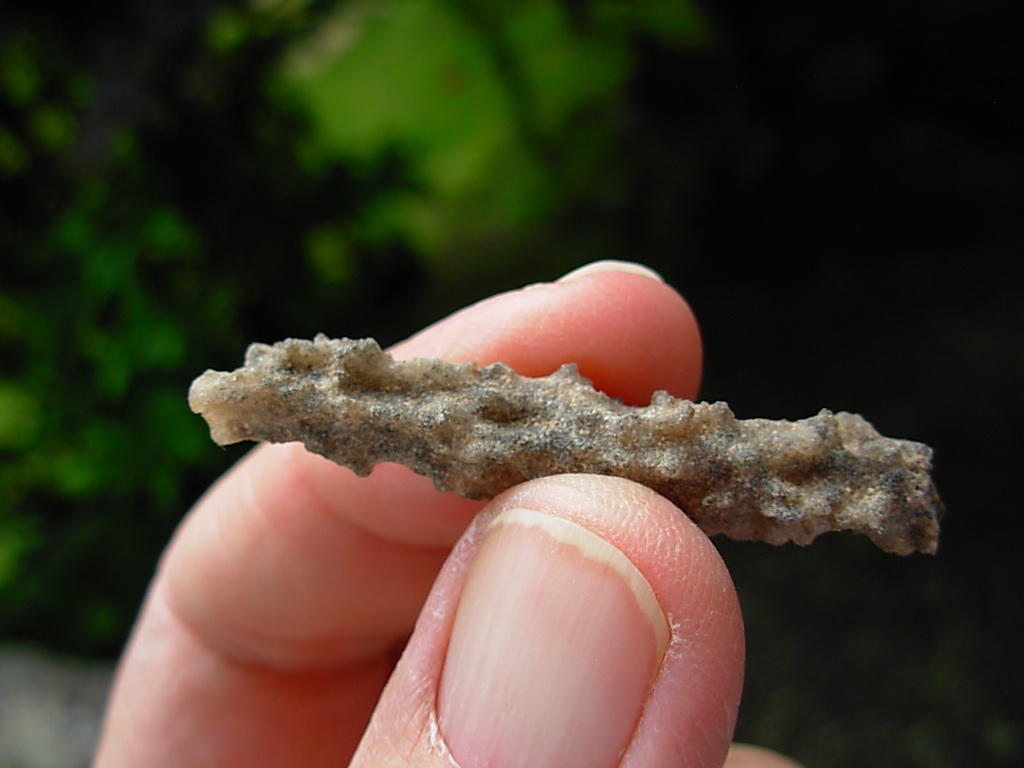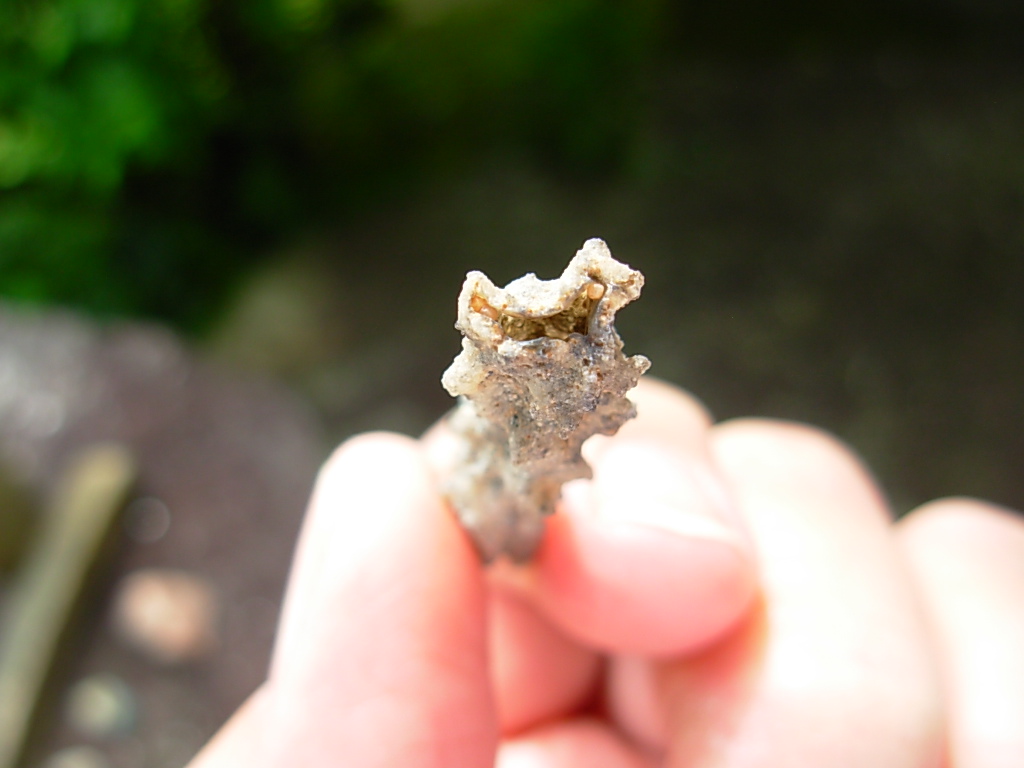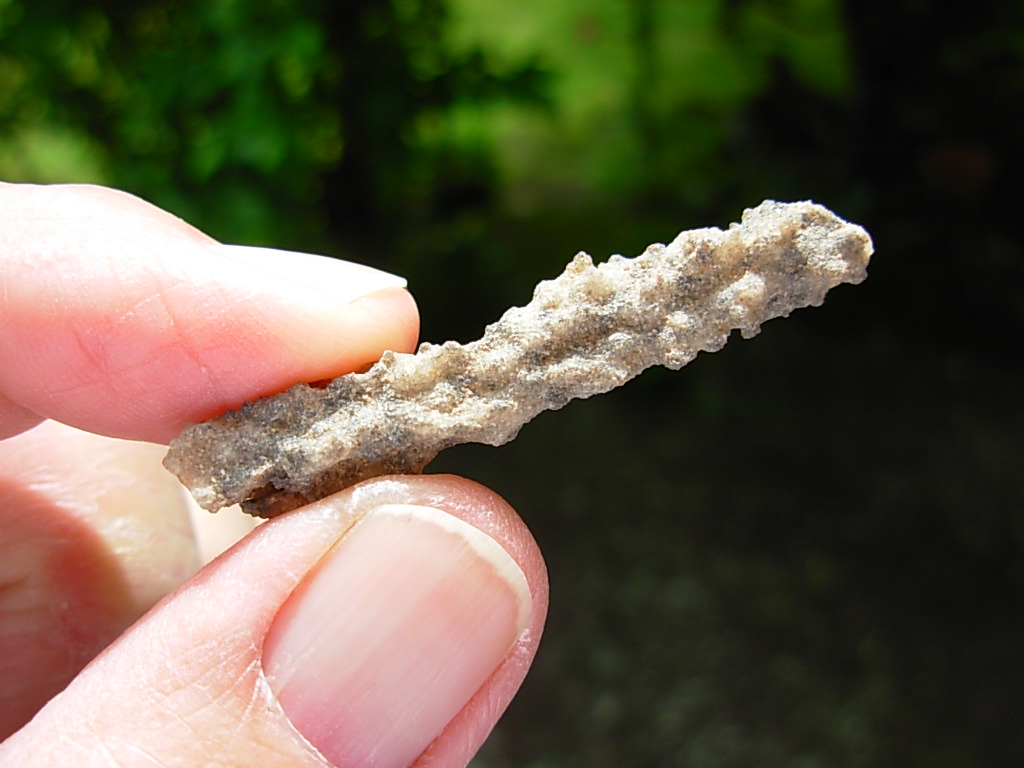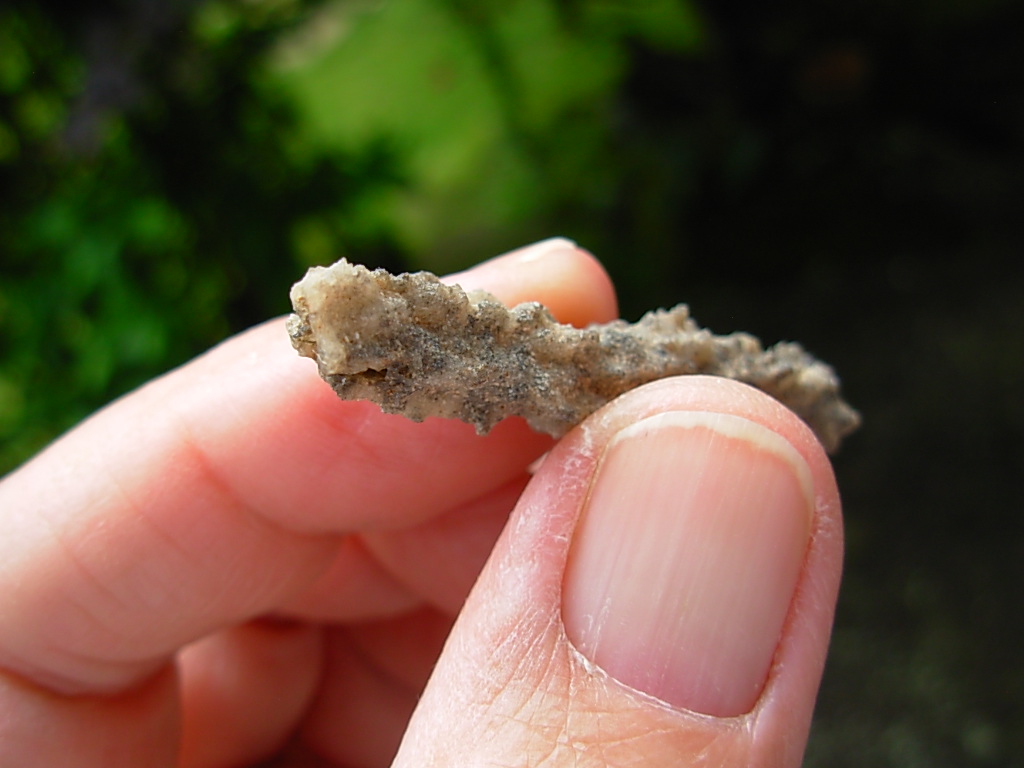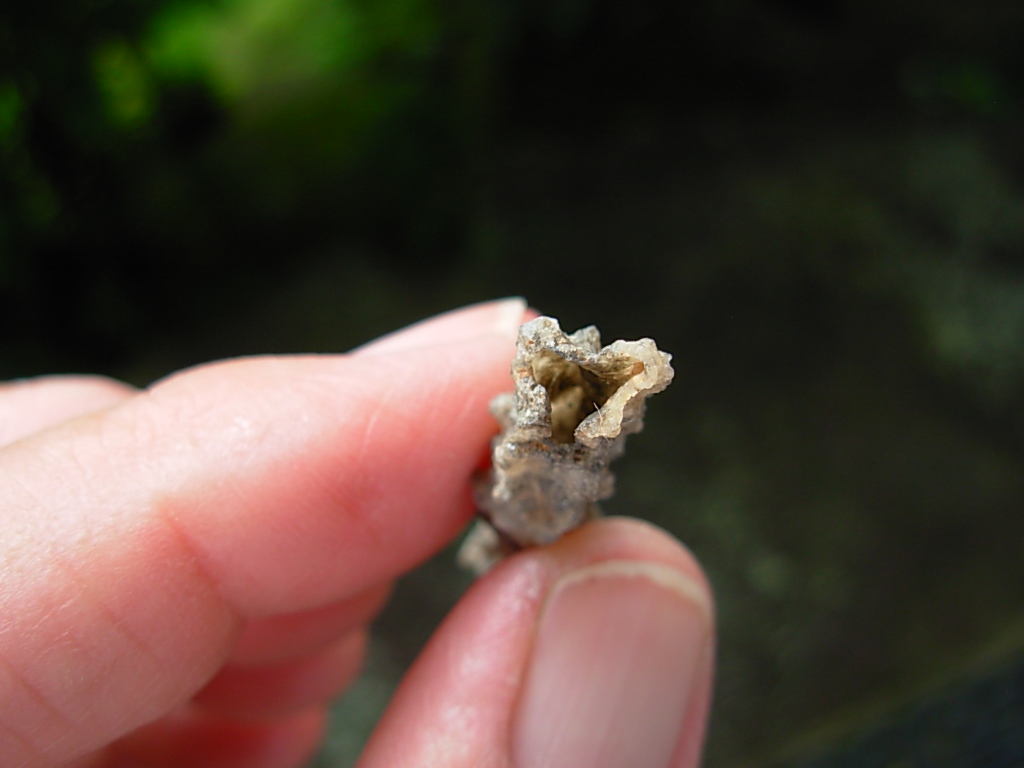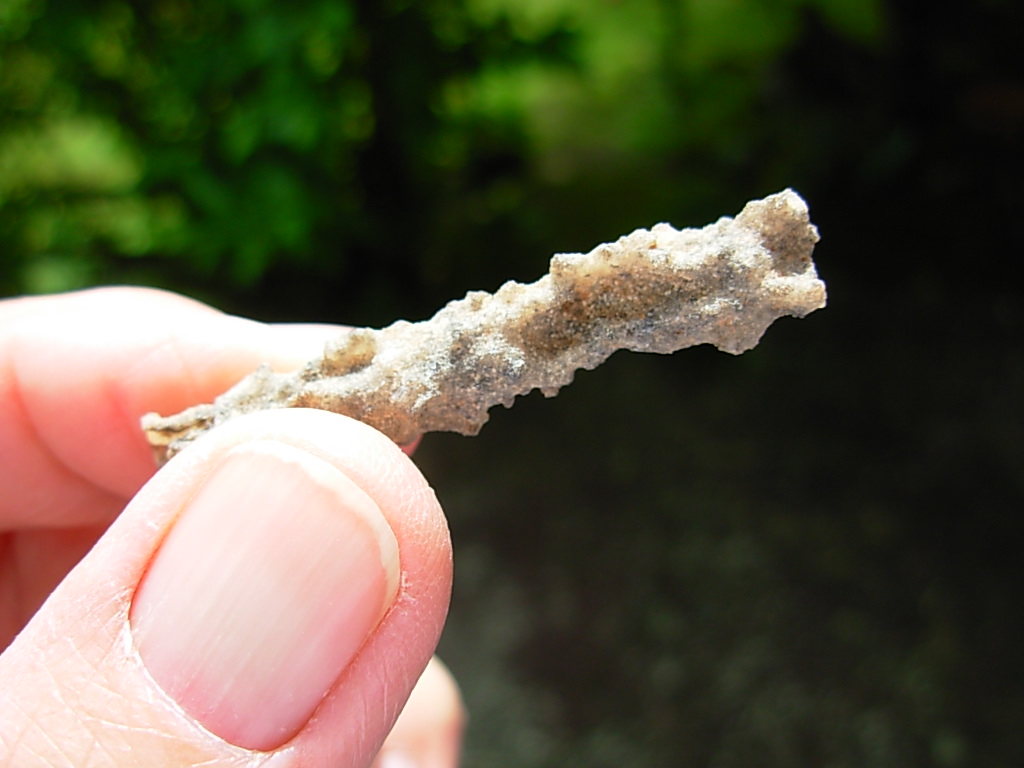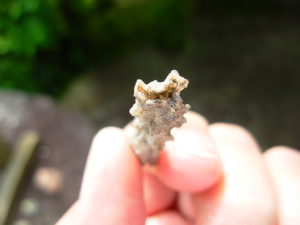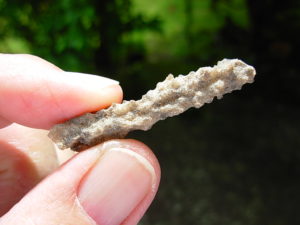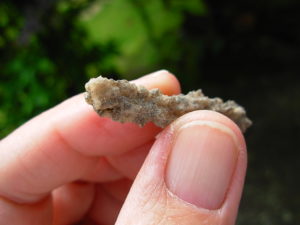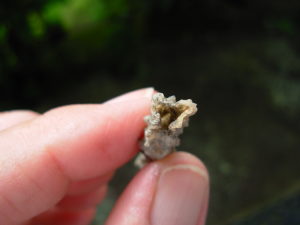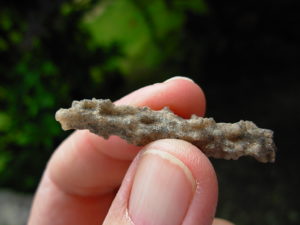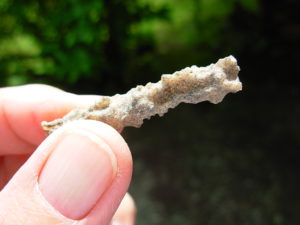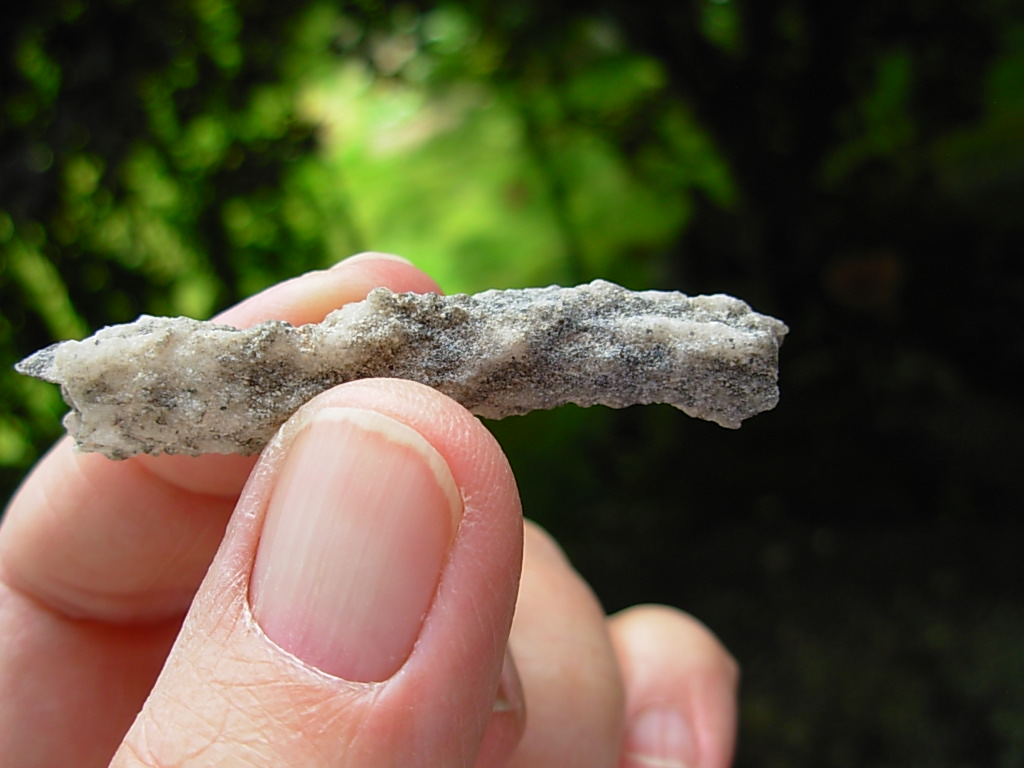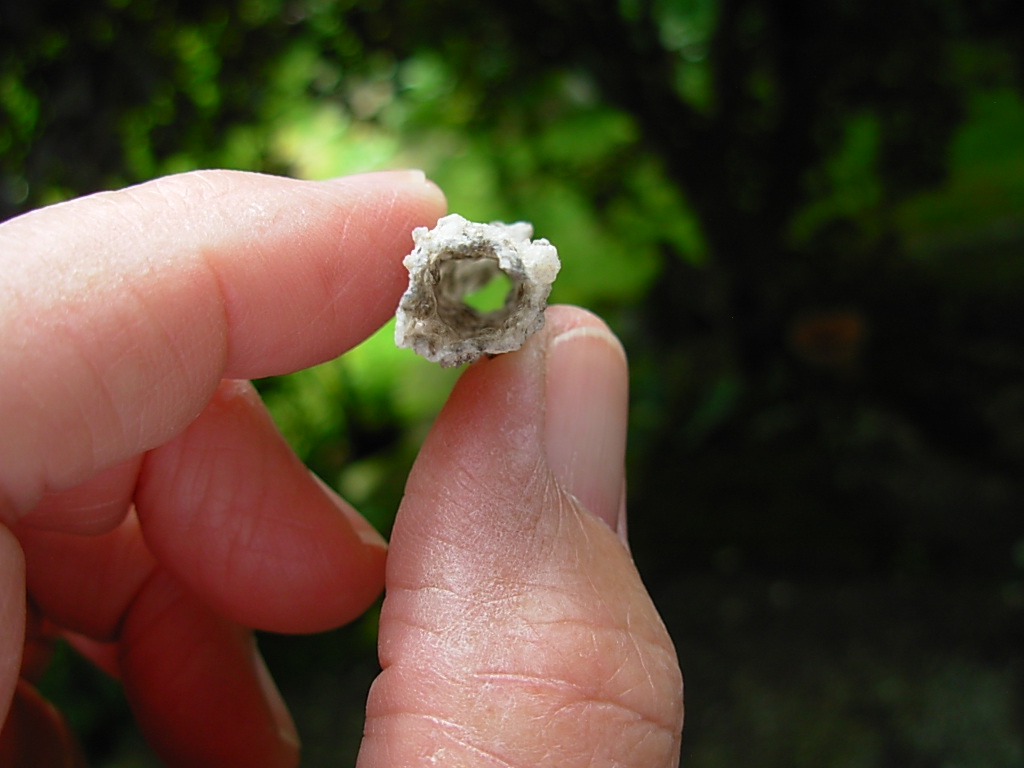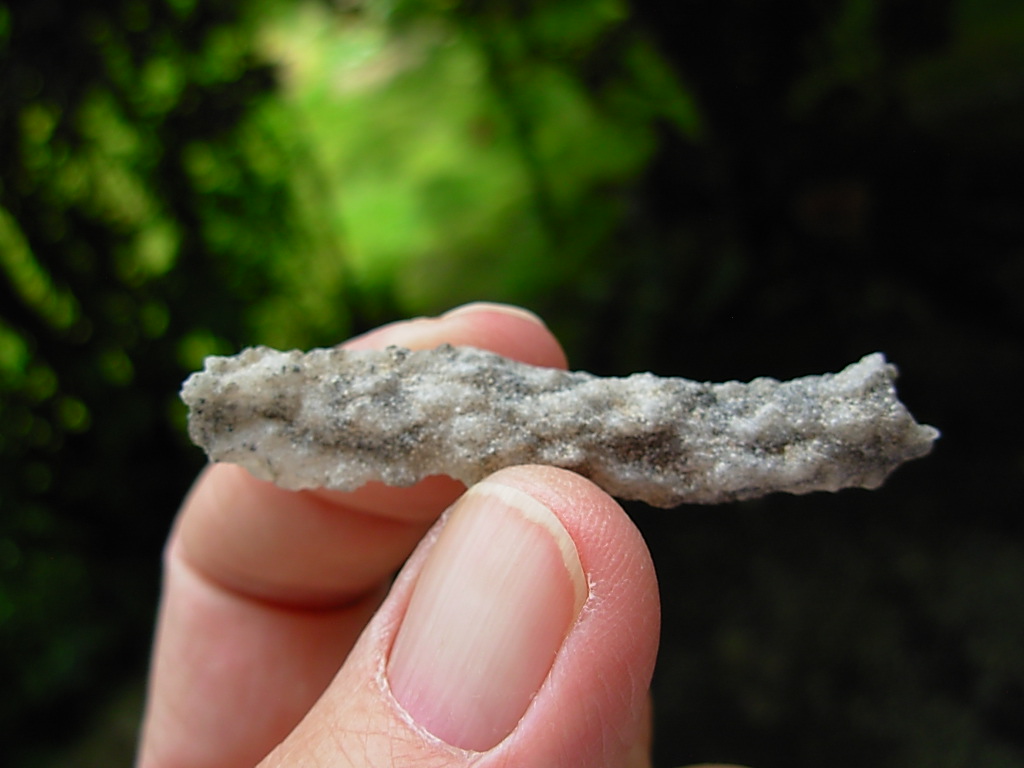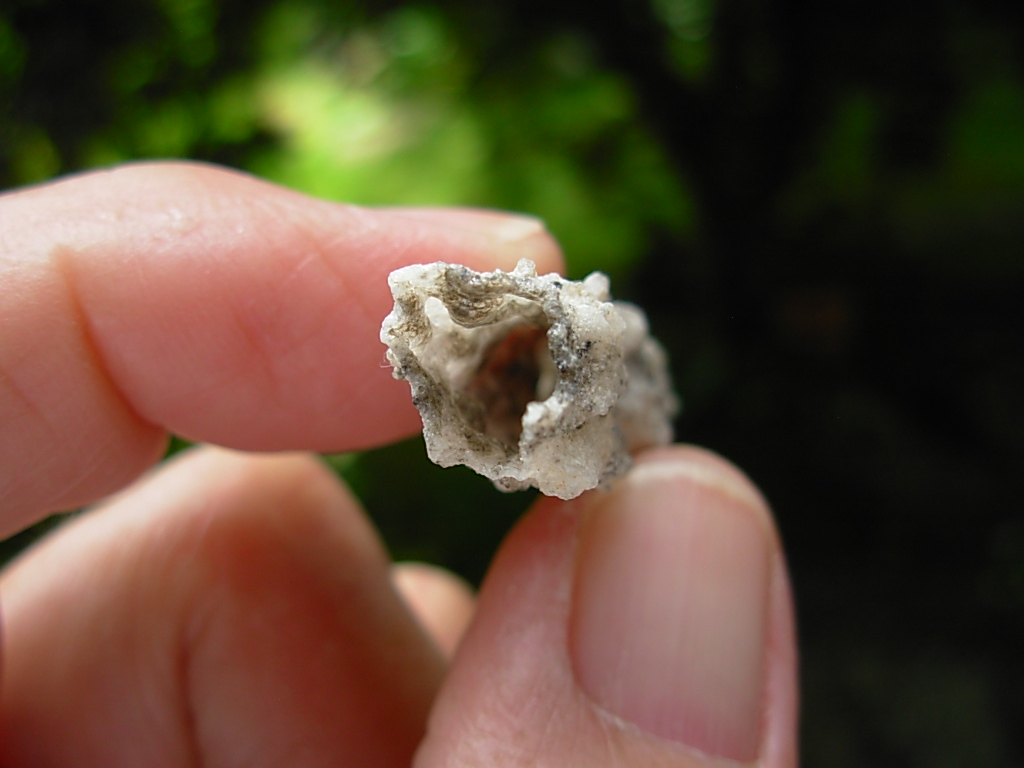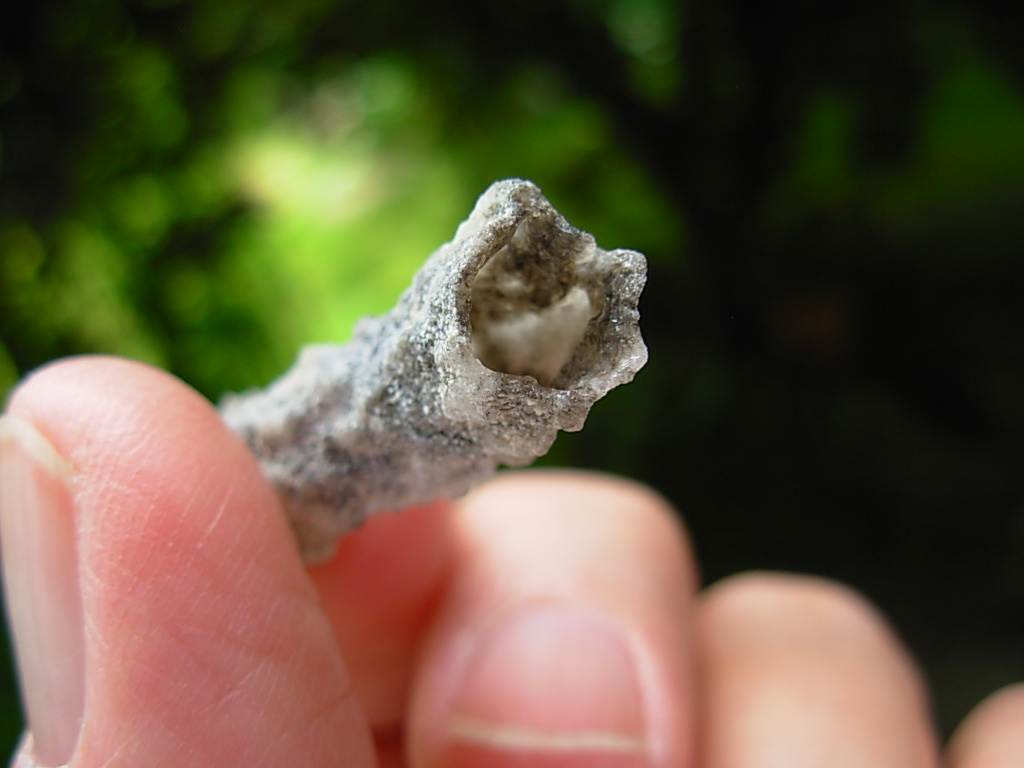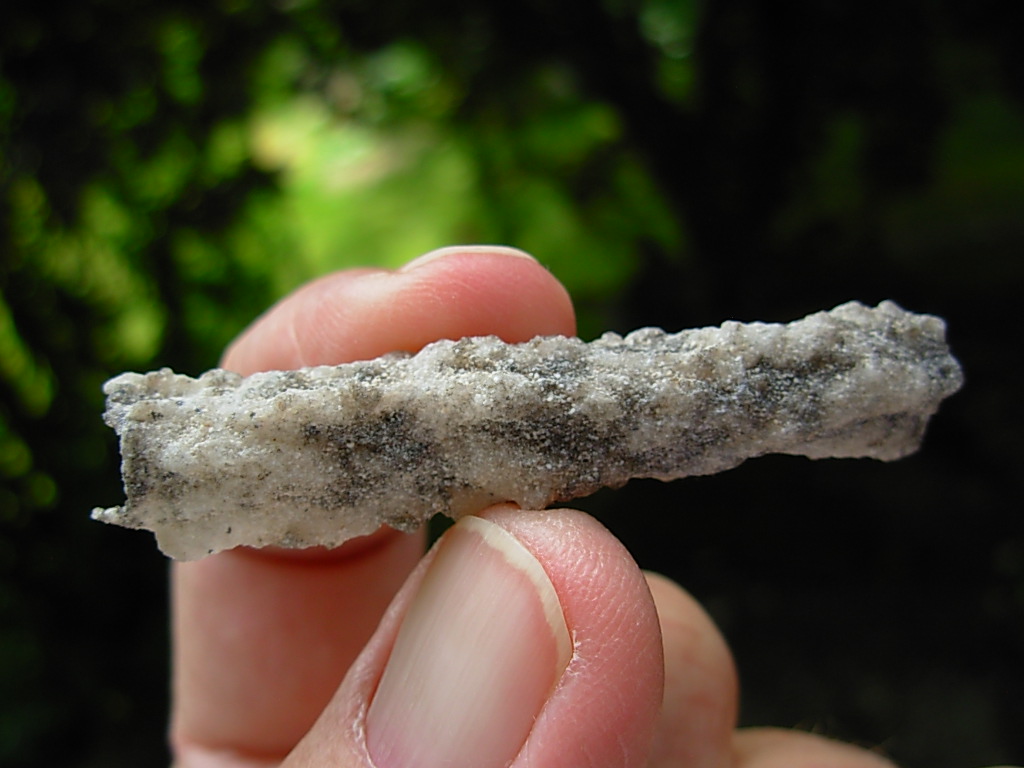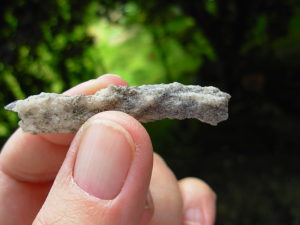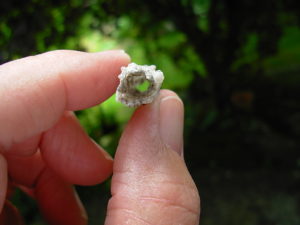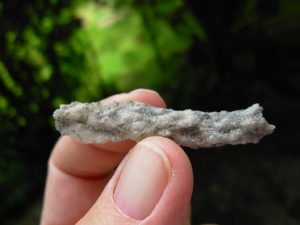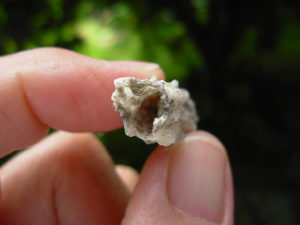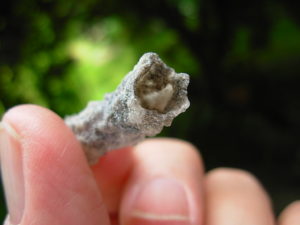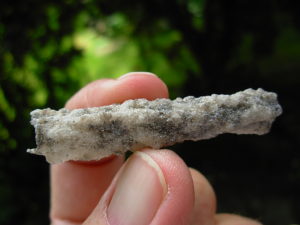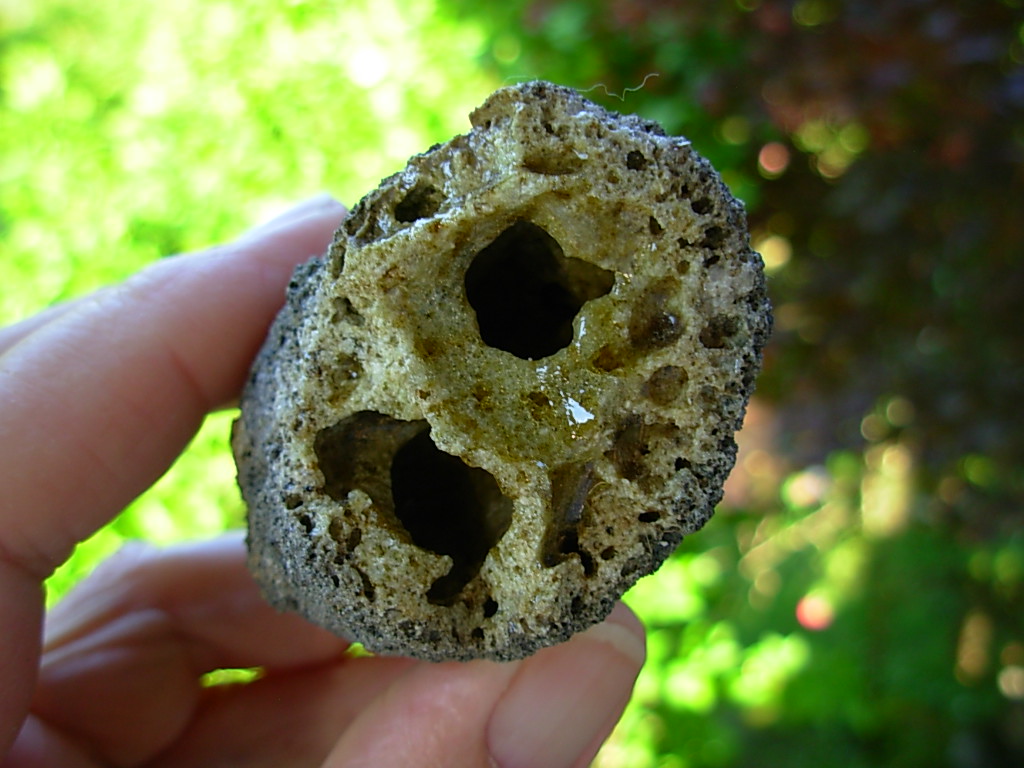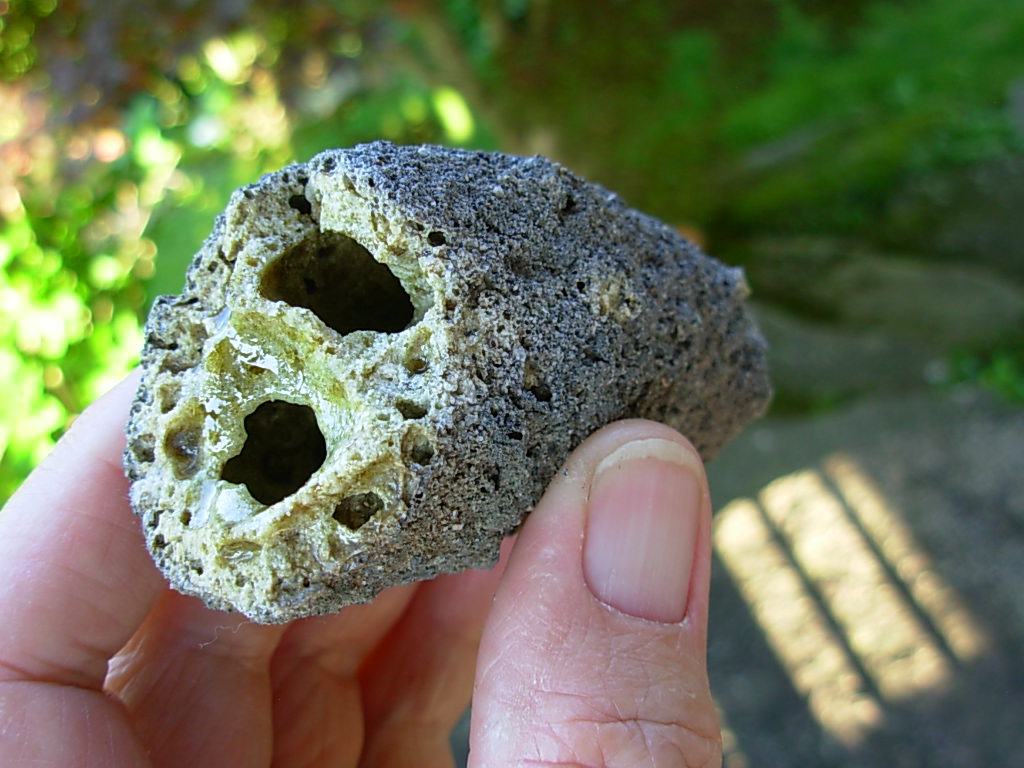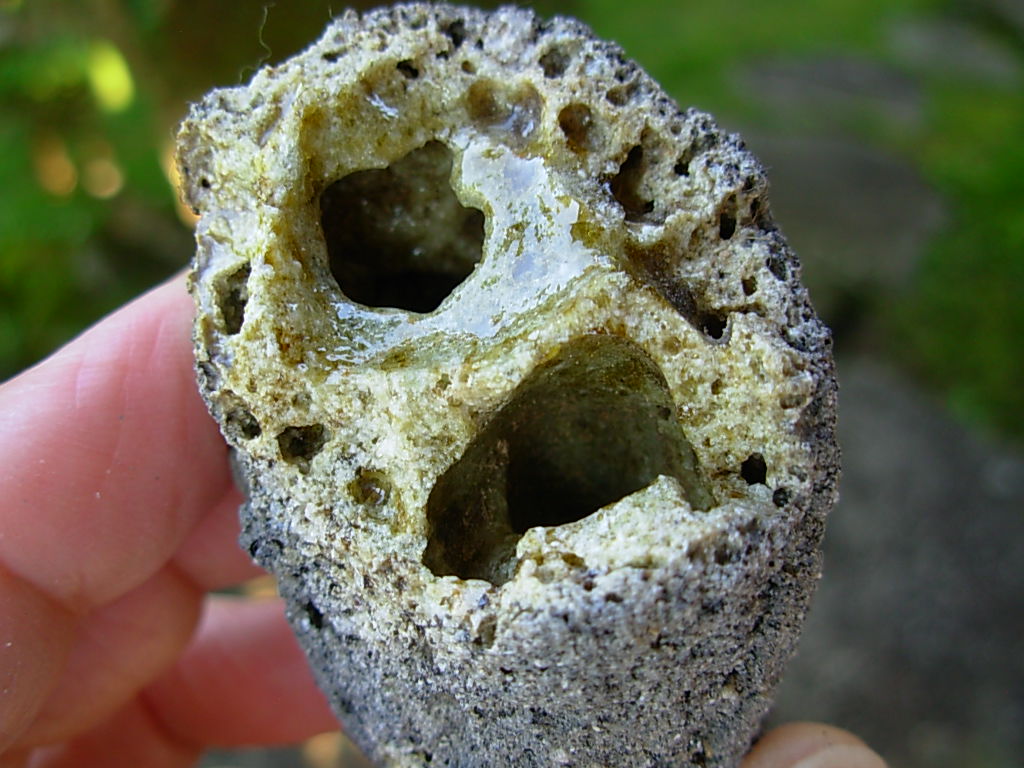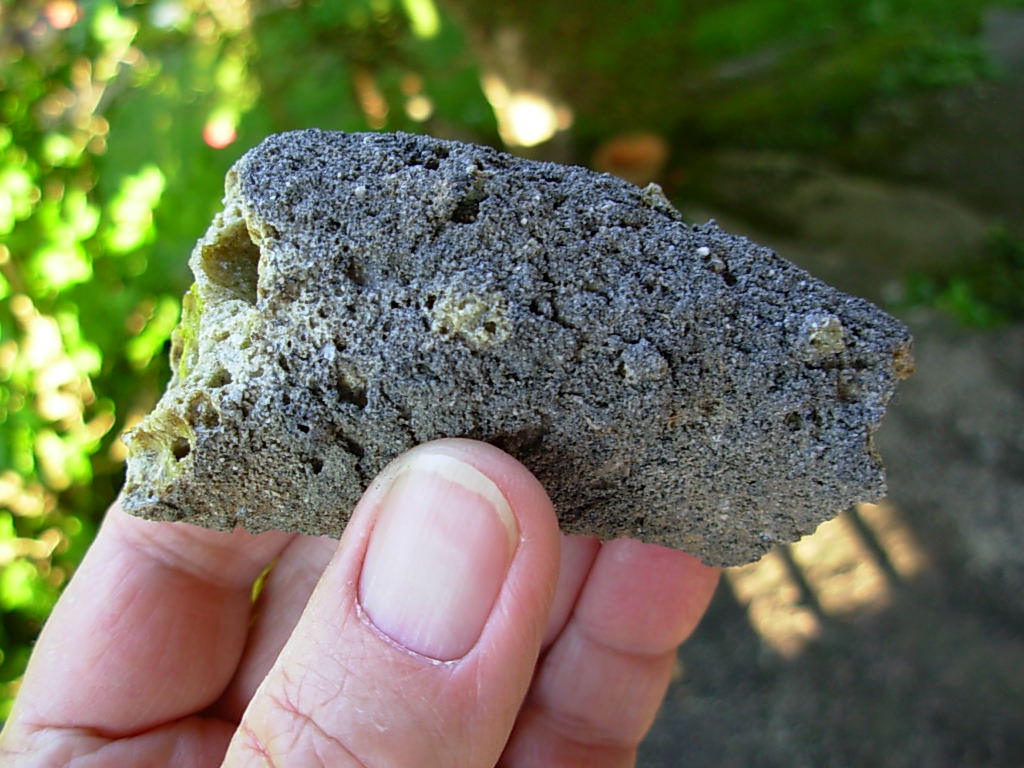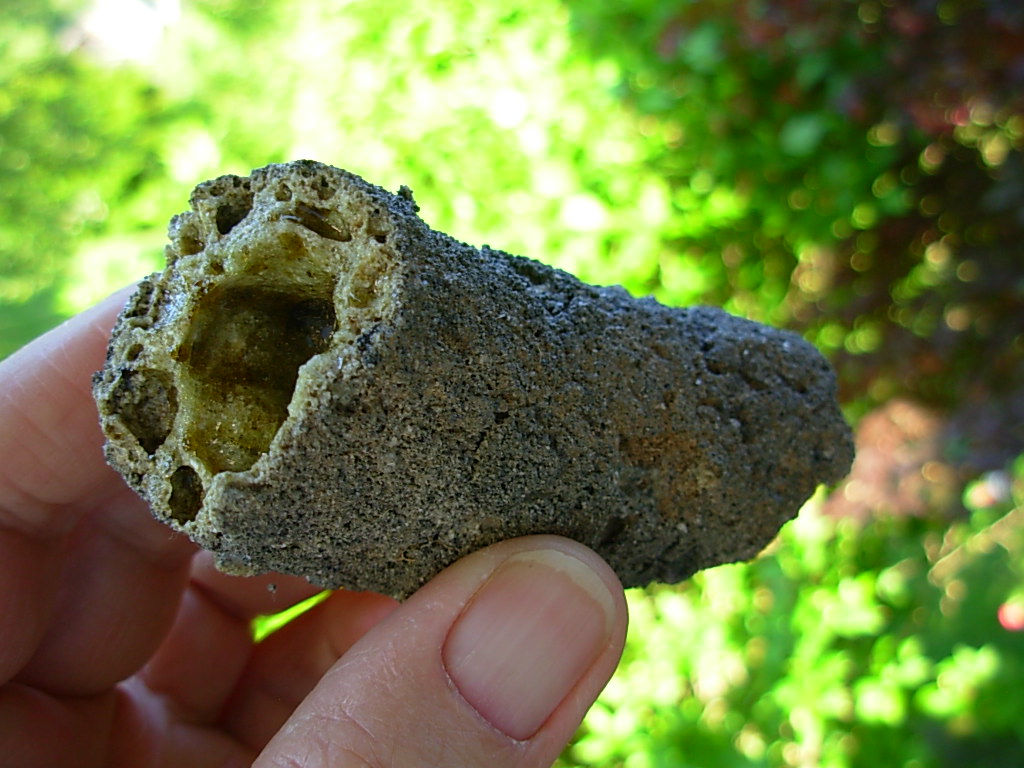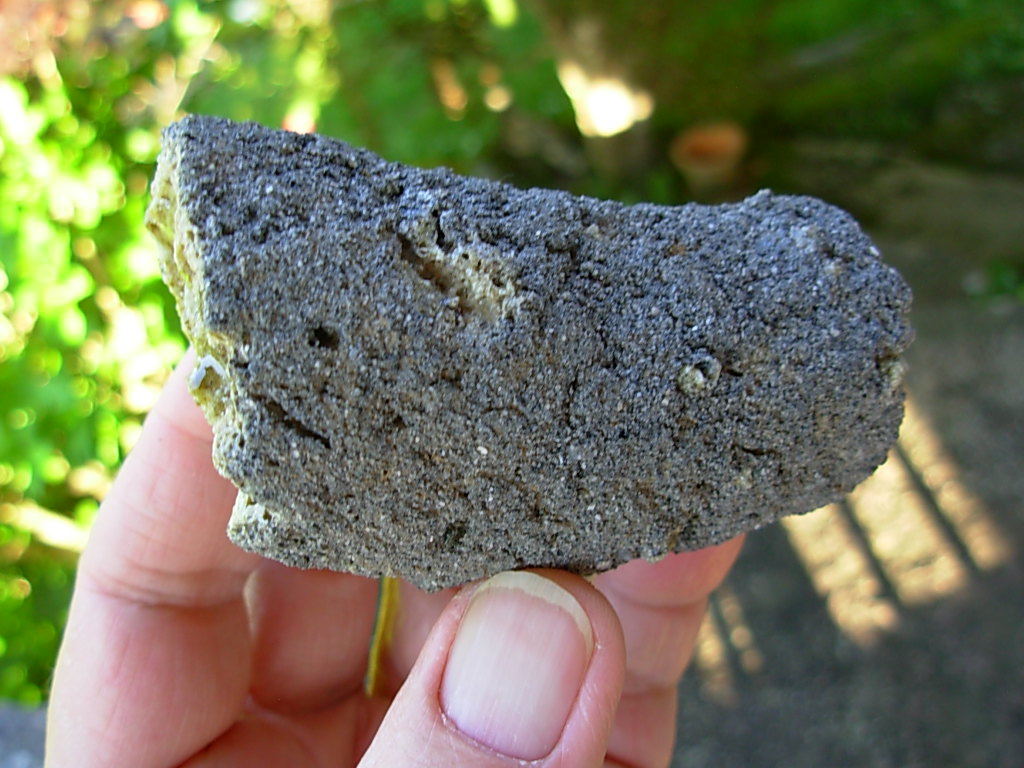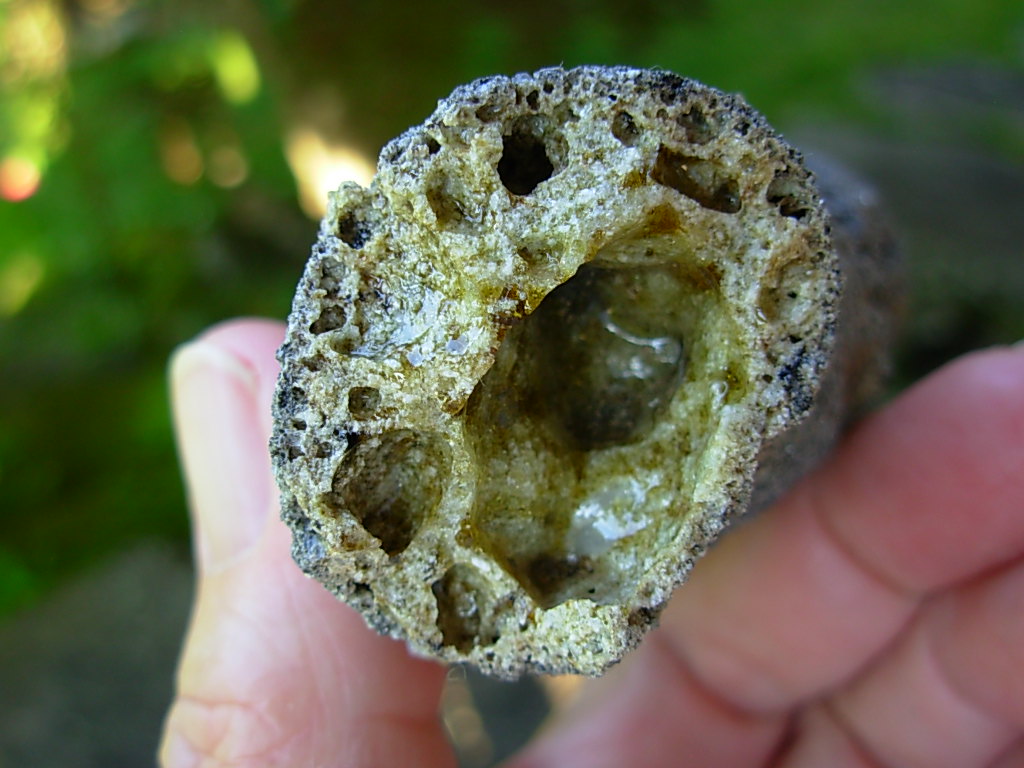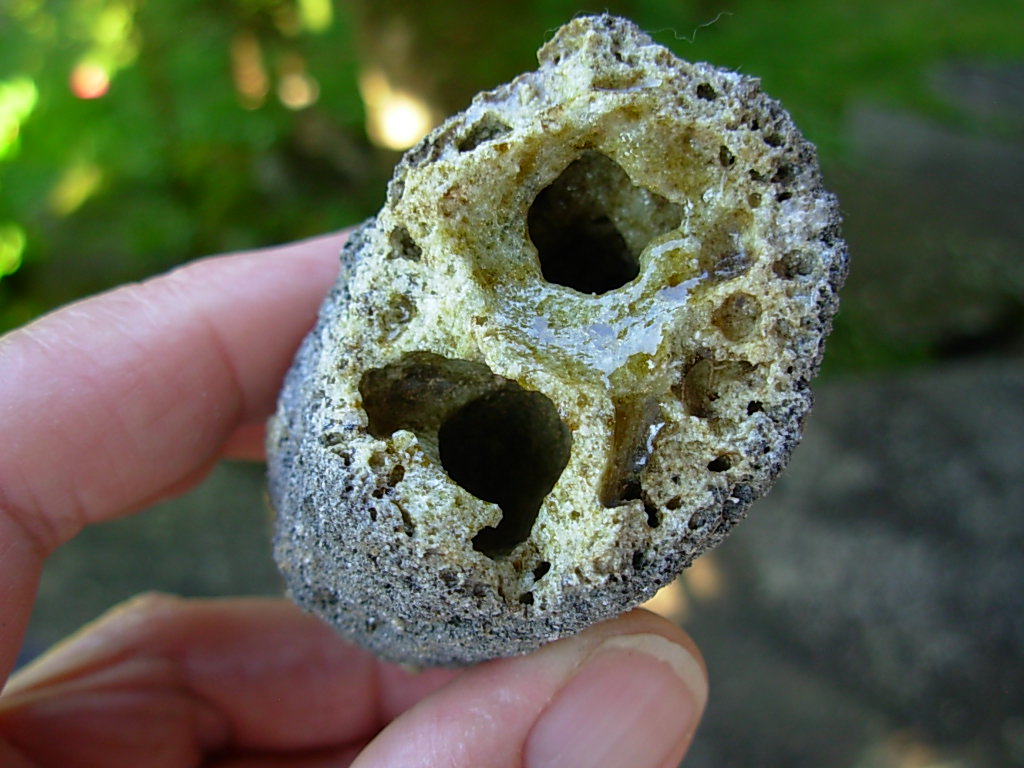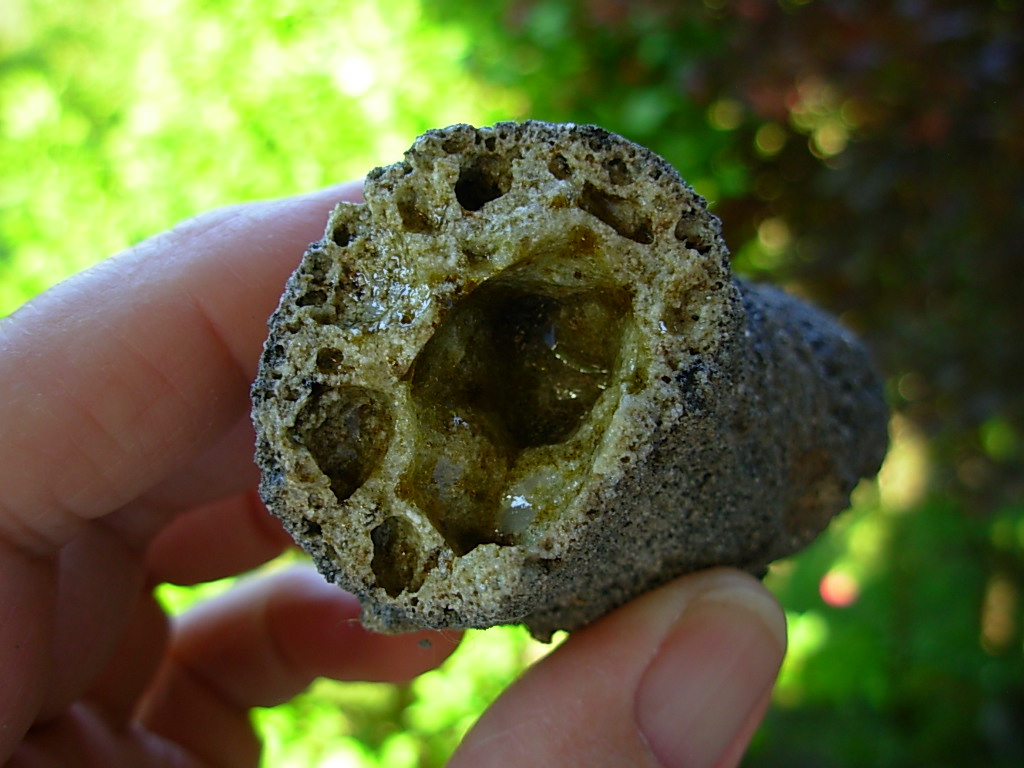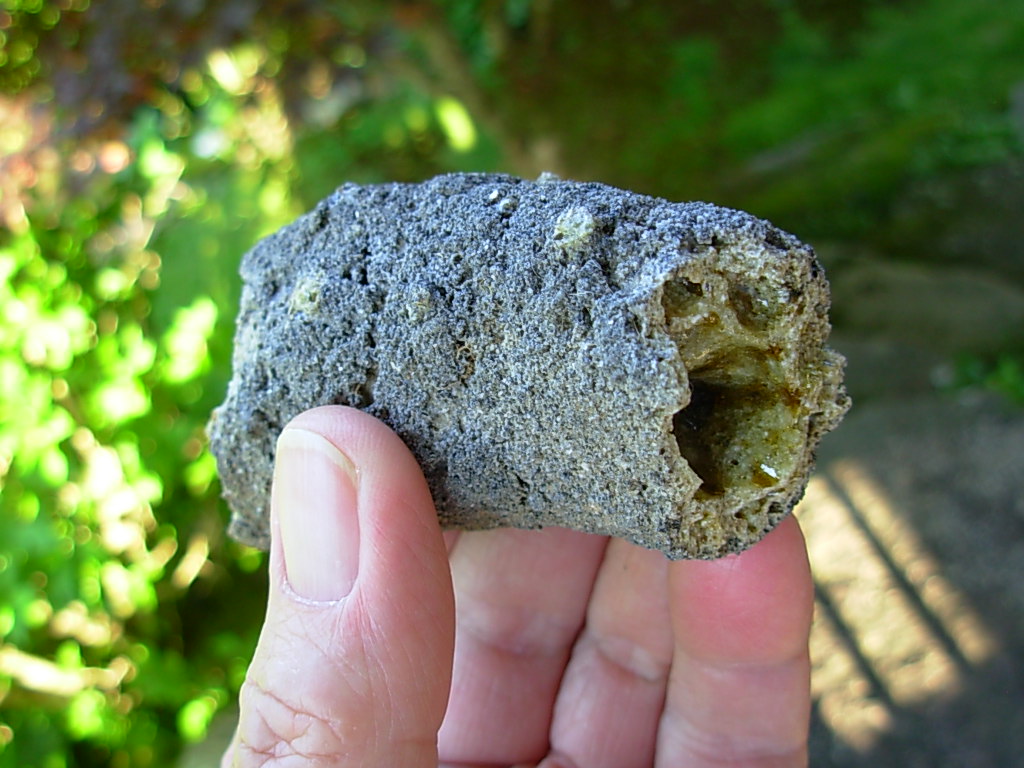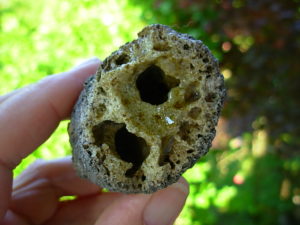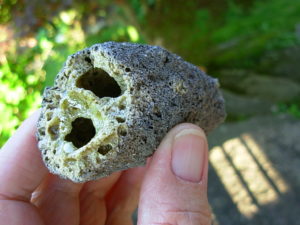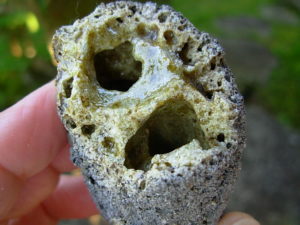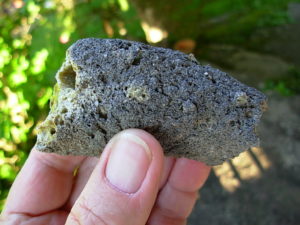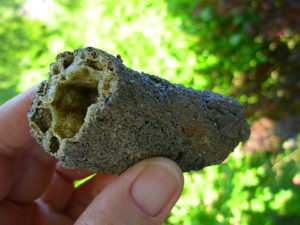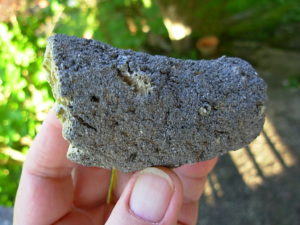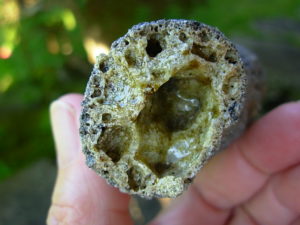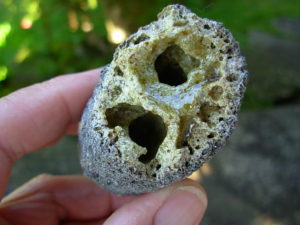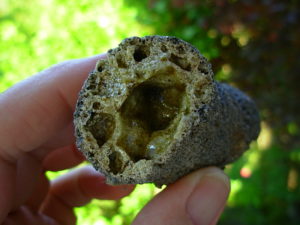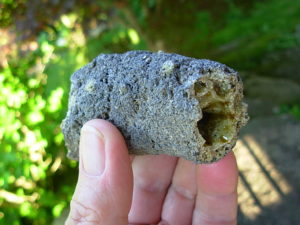Fulgurites...Sand Fused by Lightning
Fulgurite...When I was in school we were taught that there were 3 states of matter…solids, liquids and gasses. It seems the world has gotten smarter since then. There are many states of matter but there are 4 states of matter that are recognized and observable in daily life, Solids…..Liquids…. Gasses….Plasma Like a gas, plasma does not have definite shape or volume. Unlike gases, plasmas are electrically conductive, produce magnetic fields and electric currents, and respond strongly to electromagnetic forces. Plasma is actually quite common on Earth, and the majority of people observe it on a regular basis without even realizing it. Lightning, electric sparks, fluorescent lights, neon lights, plasma televisions, some types of flame and the stars are all examples of illuminated matter in the plasma state.
What Is a Fulgurite? A fulgurite is simply melted sand formed by lightning (plasma) strikes. The word fulgurite comes from the Latin word fulgur, which means “to flash” (like lightning). A fulgurite is formed when cloud to ground lightning strikes the earth. Fulgurites typically form in sand, which is mostly silicon dioxide. The melted sand forms a glass that is called lechatelierite. Lechatelierite is an amorphous material that is considered to be a mineraloid, similar to obsidian. Fulgurites come in a range of colors, including translucent white, tan, black and green. The coloration comes from impurities in the sand.
Lechatelierite is considered a mineraloid because it lacks a crystal structure. It is actually made of fused silica. Quartz is also made of silica, but it has a crystalline structure. Basically lechatelierite is natural, pure or nearly pure, silica glass. However, it differs from regular glass by virtue of its three natural origins; Meteorite Impacts, Volcanos and Lightning Strikes. The lightning strike origin is perhaps the most interesting. Obsidian is considered a natural glass but it is not pure silicon dioxide. Tektites are not lechatelierites unless they are a very pure silicon dioxide like the variety called Libyan Desert Glass.
When lightning strikes the earth in areas rich in silica sand, the intense heat and energy of the impact bolt will fuse the sand grains in a split-second with a release of energy in excess of about 1 billion Joules. A branching, hollow, glassy tube is sometimes the result. These formations produced by lightning strikes are composed of lechatelierite and sometimes with fused biotite or other minerals. They are called Fulgurites and are certainly an oddity of natural history. Fulgurites have been found that were several feet in length. Most Fulgurites are fragile and are usually found in small pieces a few inches long by a quarter inch to an inch thick. Larger pieces are high demand collectible specimens.
Fulgurites have been classified into five types based upon the type of sediment in which the fulgurite formed:
Item # 1FULG05170001
Lechatelierite Fulgurite from the Great Sand Sea in Egypt
$20.00

This specimen is from the Great Sand Sea in Southwest Egypt. This piece was collected in 2005 and has been in our private Lechatelierite Fulgurite collection for the last 12 years. The link here is an excellent overview of the Egyptian Desert formation and geology. http://www.our-egypt.com/en/deserts/western-desert/great-sand-sea/
specimen weighs 1.5 grams and measures 1.83 x 0.32 x 0.25 inches (46.5 x 8.3 x 6.5mm)
Item # 2FULG05170001
Lechatelierite Fulgurite from the Great Sand Sea in Egypt

This specimen is from the Great Sand Sea in Southwest Egypt. This piece was collected in 2005 and has been in our private Lechatelierite Fulgurite collection for the last 12 years. The link here is an excellent overview of the Egyptian Desert formation and geology. http://www.our-egypt.com/en/deserts/western-desert/great-sand-sea/
specimen weighs 2 grams and measures 2.17 x 0.42 x 0.37 inches (55.1 x 10.7 x 9.4mm)
Item # 5FULG05170001
Rare Lechatelierite Fulgurite from Lake Isabella California
$64.00

This discovery of a new Fulgurite locality near Lake Isabella, Kernville, Cove District, Kern County, California has produced specimens of the traditional Fulgurites formed in sand or silica-rich soil, usually with hollow, tubular formations. Due to the heat intensity of some of the lightning bolts discharged in this area, the molten silica-rich material that was produced subsequently entrapped small pebbles and cobbles in some of the Fulgurite specimens, before cooling. This piece has the traditional olive tan Lechatelierite of the rare California specimens. This is a large specimen and still has small dark sand like pebbles on its outside perimeter. Fulgurites from this locale are currently selling for $2.00/gram.
specimen weighs 80.5 grams and measures 3 x 1.66 x 1.38 inches (78.2 x 42.3 x 35.2mm)

